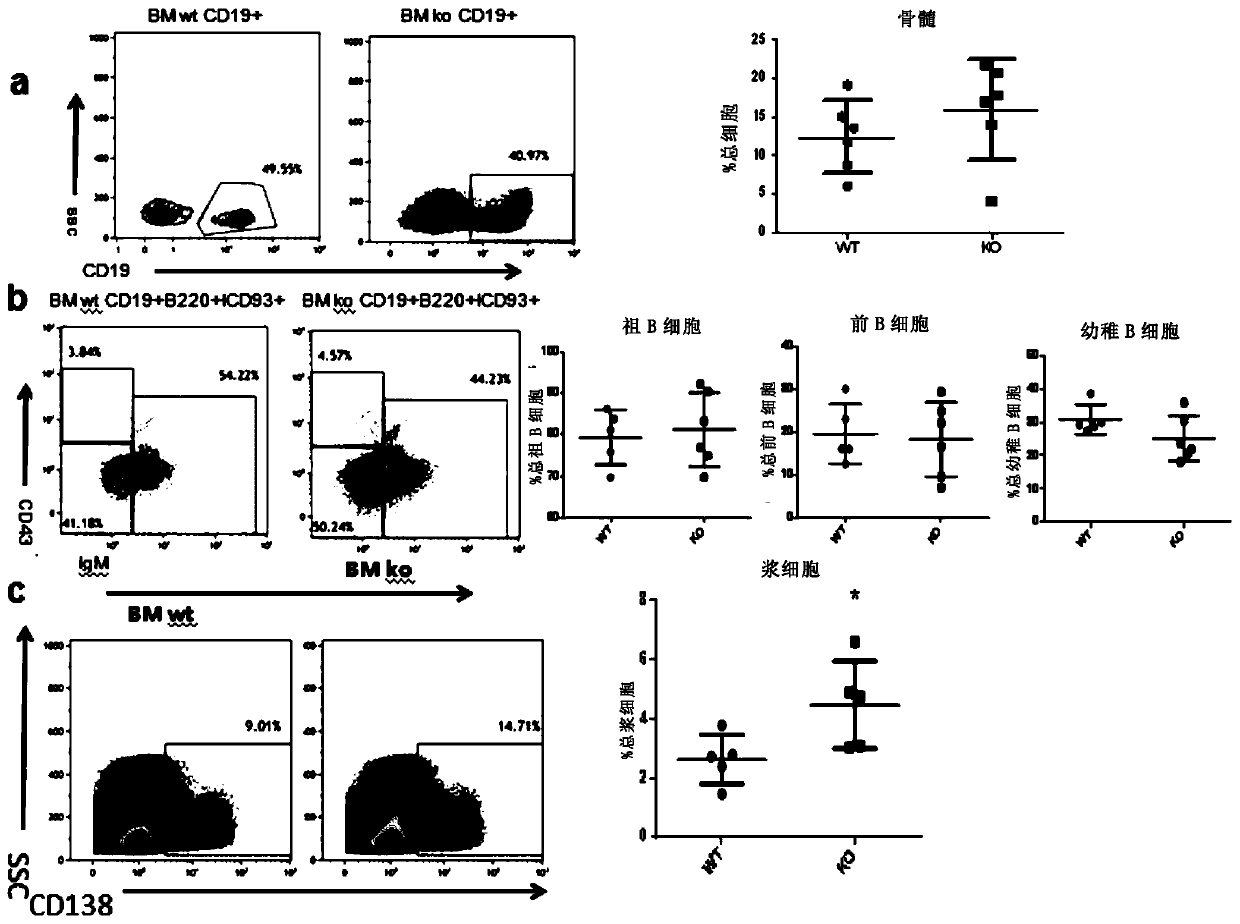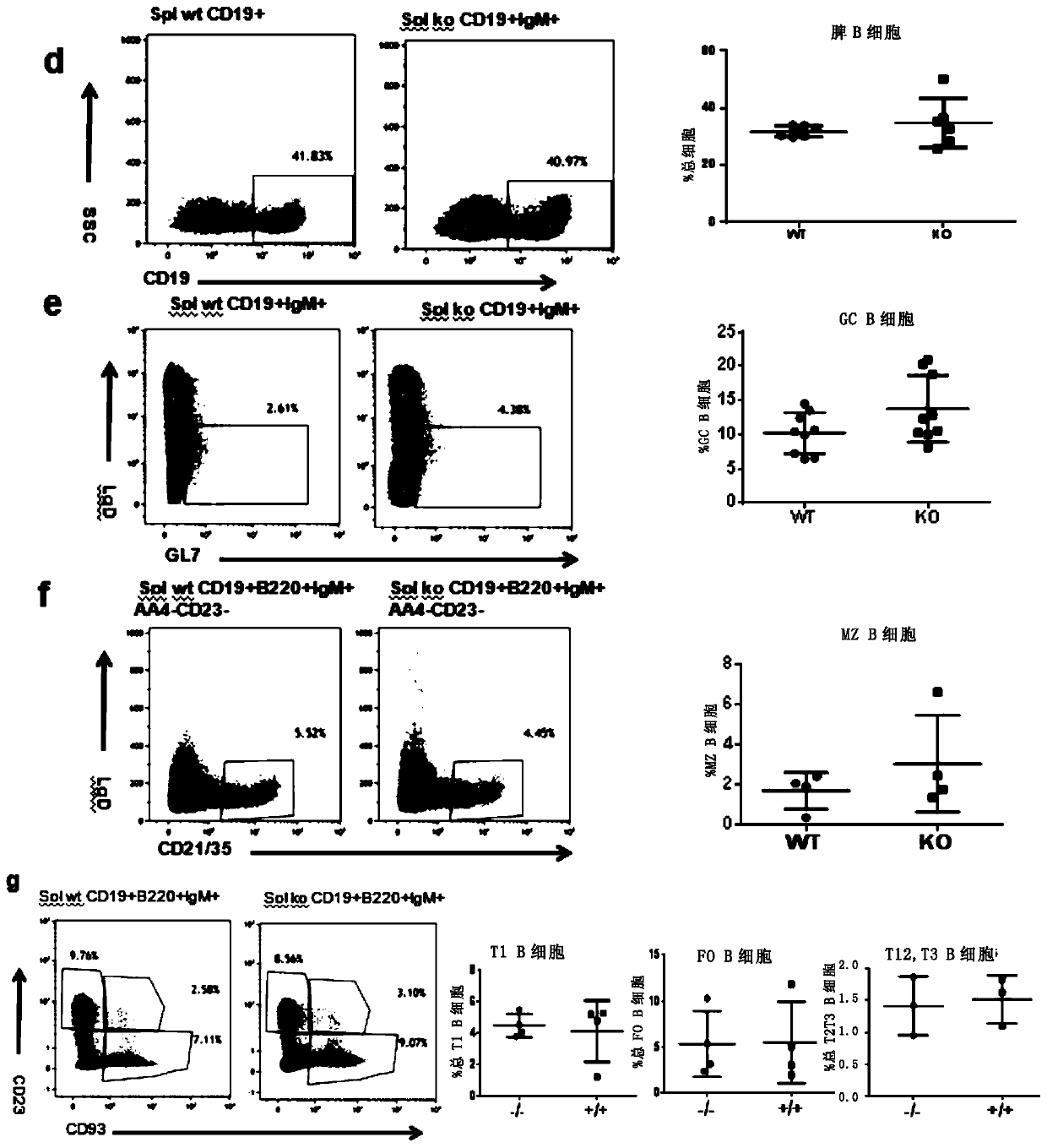Application of zkscan3 gene or protein inhibitor thereof in tumor therapy
An inhibitor and tumor technology, applied in the field of biomedicine, can solve problems affecting the development of B cells
- Summary
- Abstract
- Description
- Claims
- Application Information
AI Technical Summary
Problems solved by technology
Method used
Image
Examples
Embodiment 1
[0071] Construction of zkscan3 knockout mice
[0072] ZKSCAN3 is highly expressed in a variety of human tumor tissues, but its role under normal physiological conditions remains largely unknown. Therefore, the inventors constructed a zkscan3 knockout mouse model. First construct the destination vector, insert the eGFP fragment and the polyA termination element before the start codon of the zkscan3 gene, insert the Neo gene wrapped by Frt sites on both sides downstream of the polyA, and install the same direction arrangement on the upstream and downstream of the entire insertion unit LoxP sites. Since eGFP utilizes the promoter of the zkscan3 gene to replace the expression of its reading frame, the expression level of eGFP represents the transcription level of zkscan3 ( figure 1 a-d).
[0073] Results: Zkscan3 knockout mice had no KRAB cDNA band, and wild mice had KRAB cDNA band ( figure 1 e). It shows that zkscan3 has been completely knocked out. The embryonic developmen...
Embodiment 2
[0075] In previous work, the inventors found that zkscan3 gene was highly expressed in human germinal centers, and guessed that it might be involved in the development of B cells. To test this hypothesis, the inventors systematically analyzed B cell development and plasma cell formation in a mouse model. Eight C57BL / 6 mice aged seven to eight weeks were selected, and zkscan3 knockout and wt mice contained similar numbers of bone marrow CD19+ B cells ( figure 2 a), and the number of bone marrow AA4+IgM-CD19+CD43+HSA+ primary B cells, AA4+IgM-CD19+CD43-HSA+ pre-B cells, and AA4+IgM+CD19+HSA+ naive B cells ( figure 2 b). Likewise, zkscan3 knockout and wt mice contained similar numbers of splenic CD19+ B cells ( figure 1 d), and CD19+ / IgM+ / IgD- / GL7+ germinal center B cells ( figure 2 e), CD19+ / B220+ / IgM+ / AA4- / CD23- / CD21 / 35+ marginal zone B cells ( figure 2 f), CD19+ / B220+ / IgM++ / AA4+ / CD23-T1 B cells, CD19+ / B220+ / IgM++ / AA4+ / CD23+T2 B cells, and CD19+ / B220+ / IgM+ / AA4- / CD23+ fo...
Embodiment 3
[0077] In order to further study the relationship between zkscan3 and plasma cell generation, the inventors constructed a colorectal cancer (MCA38cell) mouse model, and created a tumor microenvironment for the mice.
[0078] Results: In zkscan3 knockout mice, the number of plasma cells in the bone marrow increased dramatically compared with wild mice ( image 3 b*P image 3 c). BM CD19+ B cells, original B cells, pre-B cells, naive B cells, marginal zone B cells, T1B cells, T2B cells and T3B cells had no significant difference compared with wild mice ( image 3 a, d, e). It shows that the increase of plasma cells in zkscan3 knockout mice is more obvious when inoculated with MAC38 tumor cells.
PUM
 Login to View More
Login to View More Abstract
Description
Claims
Application Information
 Login to View More
Login to View More - R&D
- Intellectual Property
- Life Sciences
- Materials
- Tech Scout
- Unparalleled Data Quality
- Higher Quality Content
- 60% Fewer Hallucinations
Browse by: Latest US Patents, China's latest patents, Technical Efficacy Thesaurus, Application Domain, Technology Topic, Popular Technical Reports.
© 2025 PatSnap. All rights reserved.Legal|Privacy policy|Modern Slavery Act Transparency Statement|Sitemap|About US| Contact US: help@patsnap.com



